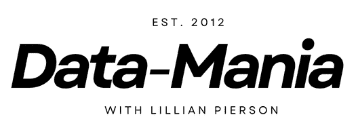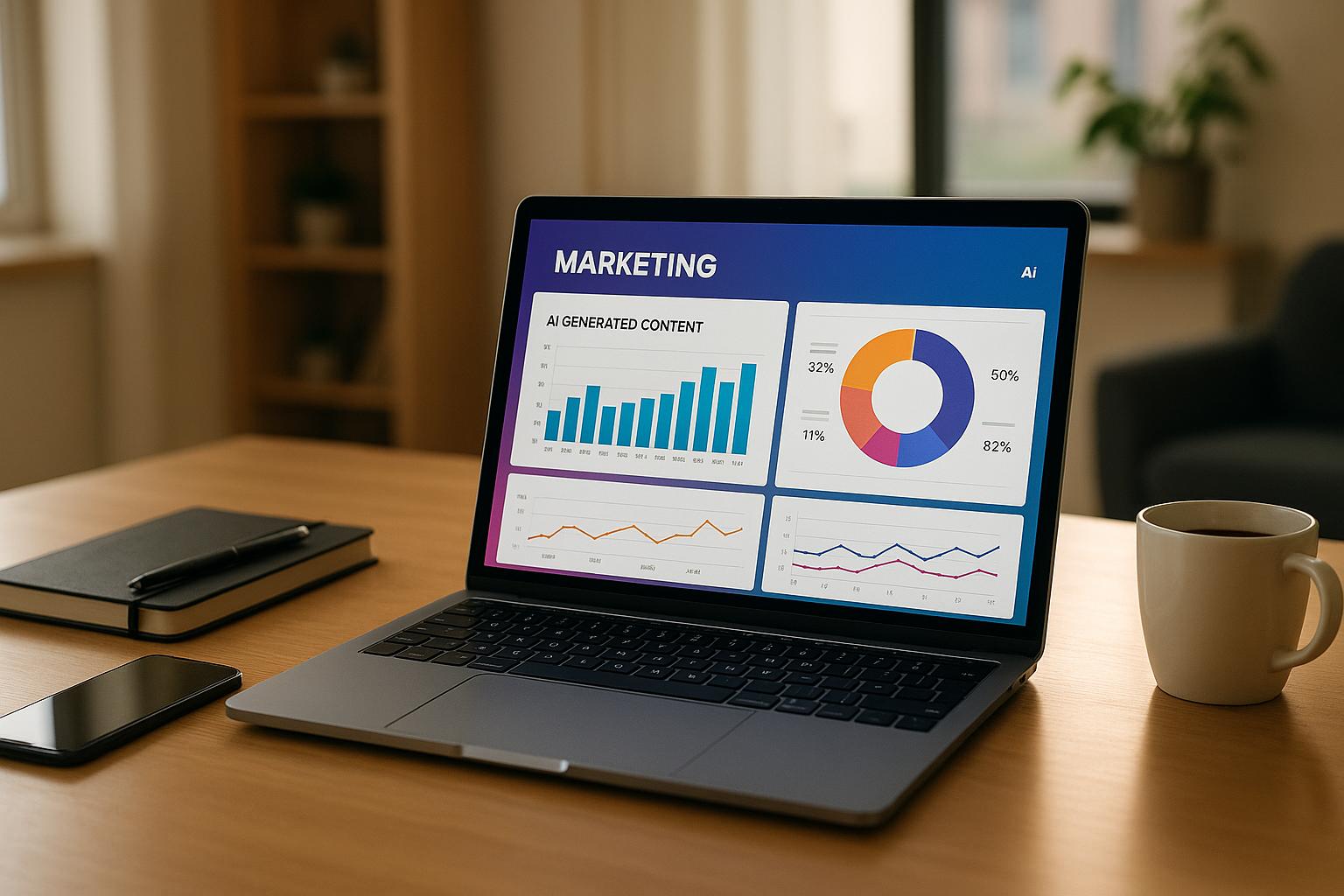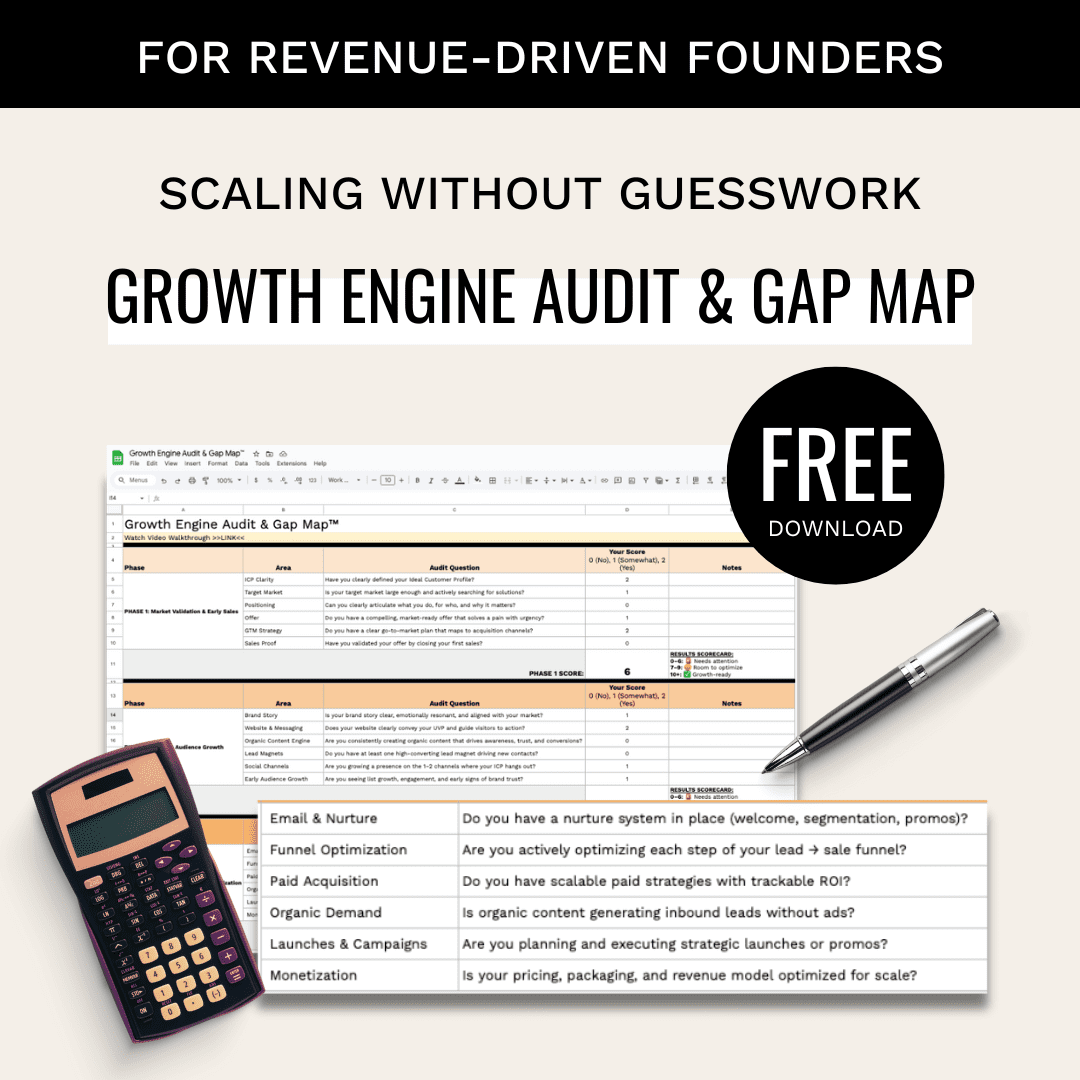AI is transforming product marketing, but not every tool is worth your time or money. Here’s a quick breakdown of five AI tools that can help marketers save time, improve efficiency, and boost results:
- ContentShake AI: Speeds up SEO content creation with keyword insights and multilingual support. Best for teams focused on global SEO strategies. Cost: $60/month.
- HubSpot AI: Integrates with HubSpot CRM for content creation, customer insights, and automation. Ideal for existing HubSpot users. Cost: Free to paid tiers.
- Zapier: Automates workflows across 7,000+ apps, saving time on repetitive tasks. Great for simplifying operations. Cost: Starts at $19.99/month.
- Lexica Art: Creates AI-generated visuals for social media and marketing. Perfect for teams needing custom, photorealistic images. Cost: $8–$48/month.
- Surfer SEO: Optimizes content for better search rankings with actionable data insights. Best for improving organic traffic. Cost: $89/month.
Quick Comparison
| Tool | Key Features | Best For | Monthly Cost |
|---|---|---|---|
| ContentShake AI | SEO-friendly, multilingual content | International SEO content | $60/month |
| HubSpot AI | CRM integration, automation | HubSpot users | Free to paid tiers |
| Zapier | Workflow automation across apps | Simplifying operations | $19.99+ |
| Lexica Art | AI-generated visuals | Social media visuals | $8–$48/month |
| Surfer SEO | Data-driven content optimization | Improving search rankings | $89+/month |
Each tool has strengths and limitations, so choose based on your needs. Start small, test their impact, and expand as needed. AI isn’t about replacing creativity – it’s about amplifying it.
My Top 10 AI Tools for Marketing (AI Marketing Essentials)
1. ContentShake AI
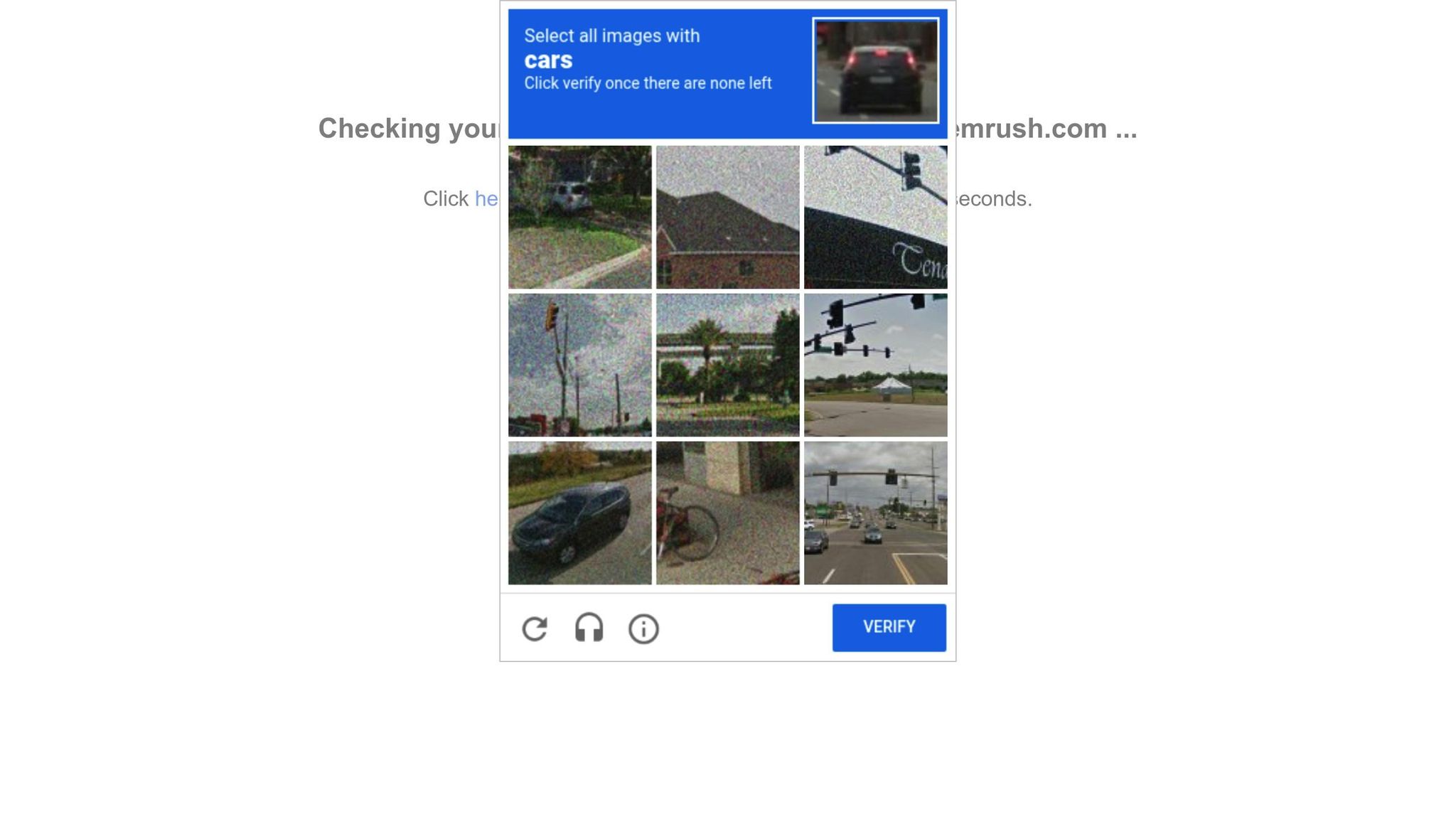
ContentShake AI combines the writing power of ChatGPT with Semrush‘s extensive SEO data. With access to a colossal database of 26.2 billion keywords and 808 million domain profiles, this tool uses real-time data to provide valuable insights.
Content Creation
ContentShake AI simplifies the content creation process by generating SEO-friendly titles, relevant keywords, and topic ideas – all in one go. It offers 25 weekly content suggestions and claims to make content creation up to 12 times faster than traditional methods. According to a Semrush study, 43% of users reported improved rankings thanks to AI-generated content. Additionally, its Brand Voice profile ensures your messaging stays consistent, and it supports content generation in seven languages: English, Spanish, French, German, Italian, Dutch, and Portuguese.
Beyond just creating content, the tool provides insights that help tailor your messaging to your audience.
Customer Insights
By analyzing real-world questions asked online, ContentShake AI uncovers actionable customer insights. It identifies the best-performing content types for your target audience and location, assists in designing audience personas, and pulls in relevant facts and statistics from across the web to add authority to your content. These insights are particularly valuable for shaping product marketing strategies that align with your audience’s needs.
Automation
ContentShake AI automates key tasks like copywriting, SEO, and publishing. It integrates seamlessly with platforms like WordPress and Google Docs, making it easy to manage everything from brainstorming to final edits while staying updated with the latest keyword trends from Semrush.
This level of automation ensures that your workflow is efficient and sets the stage for detailed performance tracking.
Analytics
The tool features a content scoring system that pinpoints areas for improvement in readability and keyword usage. It provides an overall quality score for your articles, helping you refine them before publishing. Competitor insights are built right into the editor, offering a clear view of what’s working in your niche. Real-time SEO metrics, such as search volume, keyword difficulty, and search intent, further guide your content strategy. These analytical tools make it easier to improve your content and maximize your return on investment.
While ContentShake AI is designed to boost efficiency, it works best when paired with strong subject knowledge. Relying solely on the tool for unfamiliar topics might result in content that lacks relevance or struggles to rank.
With a price tag of $60 per month and a 7-day free trial, ContentShake AI offers an array of features that can be a worthwhile investment for marketers aiming to elevate their content game.
2. HubSpot AI
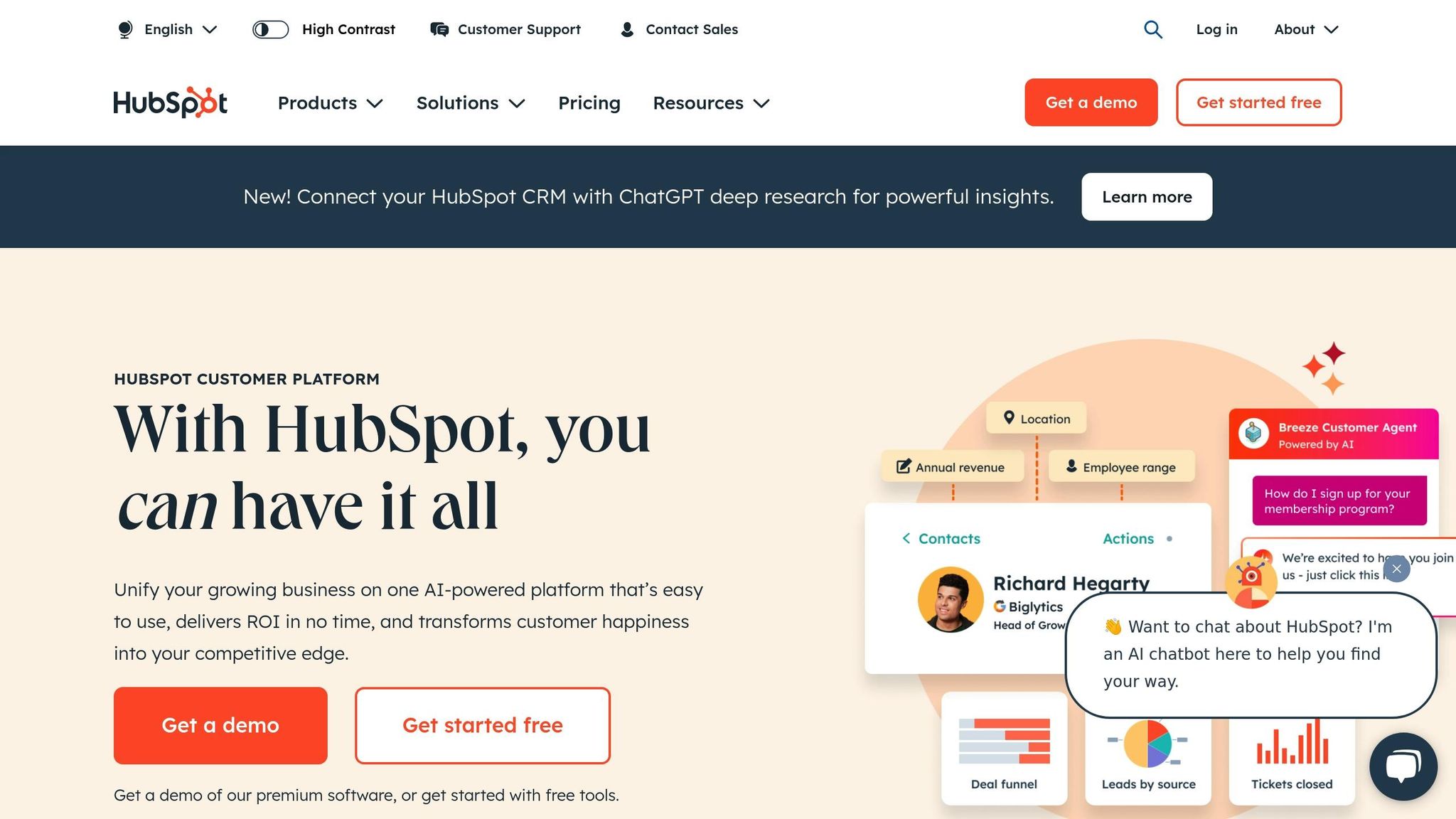
HubSpot AI, powered by its Breeze and Copilot tools, brings artificial intelligence directly into your marketing workflows. Unlike standalone AI tools, HubSpot’s approach integrates seamlessly with your CRM data, enabling precise content creation and automated actions that are particularly helpful for product marketers. This built-in design makes HubSpot AI a comprehensive solution, with features that extend across several key areas.
Content Creation
HubSpot AI simplifies the process of creating and refining content across multiple formats, including blog posts, landing pages, knowledge base articles, CTAs, social media posts, and marketing emails. It helps ensure your content stays aligned with your brand’s tone and style. Beyond writing, it can generate titles, meta descriptions, and even repurpose blog posts into social media updates, saving time and effort.
However, HubSpot emphasizes the importance of reviewing and fact-checking AI-generated content to maintain accuracy and brand integrity. The impact is clear: 86% of marketers report saving at least one hour daily by using AI to handle creative tasks more efficiently.
Customer Insights
One of HubSpot AI’s standout features is its ability to analyze customer interactions across various touchpoints. By tracking every stage of the customer journey, it identifies trends and areas for improvement. With advanced natural language processing, the platform provides detailed sentiment analysis.
As Howie Stein, Managing Director and AI strategist at Deloitte, explains:
"Post-case closure, after a case or after a conversation is complete, we’re using generative AI to summarize call reasons, resolution steps, customer sentiment. Then we’re using that information to refine the knowledge base, refine troubleshooting guides, and refine our predictive capability for future calls".
These capabilities create a centralized, up-to-date source of customer data, empowering teams to make smarter marketing decisions. When combined with tools like ContentShake AI, this feature offers a well-rounded view of customer behavior.
Automation
Breeze AI takes automation to the next level by suggesting workflow enrollment triggers – like form submissions, property changes, list memberships, and page views – and recommending actions such as task creation, property updates, and Slack notifications. This functionality has been shown to save significant time on large-scale tasks.
The platform also personalizes email content and notifications based on individual customer data. This level of personalization is impactful – personalized emails are six times more likely to drive conversions compared to generic ones.
Analytics
HubSpot AI’s analytics go beyond basic reporting by delivering predictive insights and automated trend detection. It evaluates metrics like conversion rates, clickthroughs, contact submissions, and engagement to identify areas for improvement. Machine learning enhances these analytics, detecting trends and offering actionable recommendations.
The AI also predicts customer churn, suggests personalized product recommendations, and flags potential issues before they escalate. These analytics have proven effective: 77% of customer experience teams report better response times and higher satisfaction scores with AI. Additionally, marketers using AI and automation tools are 95% more likely to rate their marketing strategies as highly effective.
HubSpot AI thrives when paired with robust customer data and established workflows. Its seamless integration makes it an ideal choice for teams already working within the HubSpot ecosystem.
3. Zapier
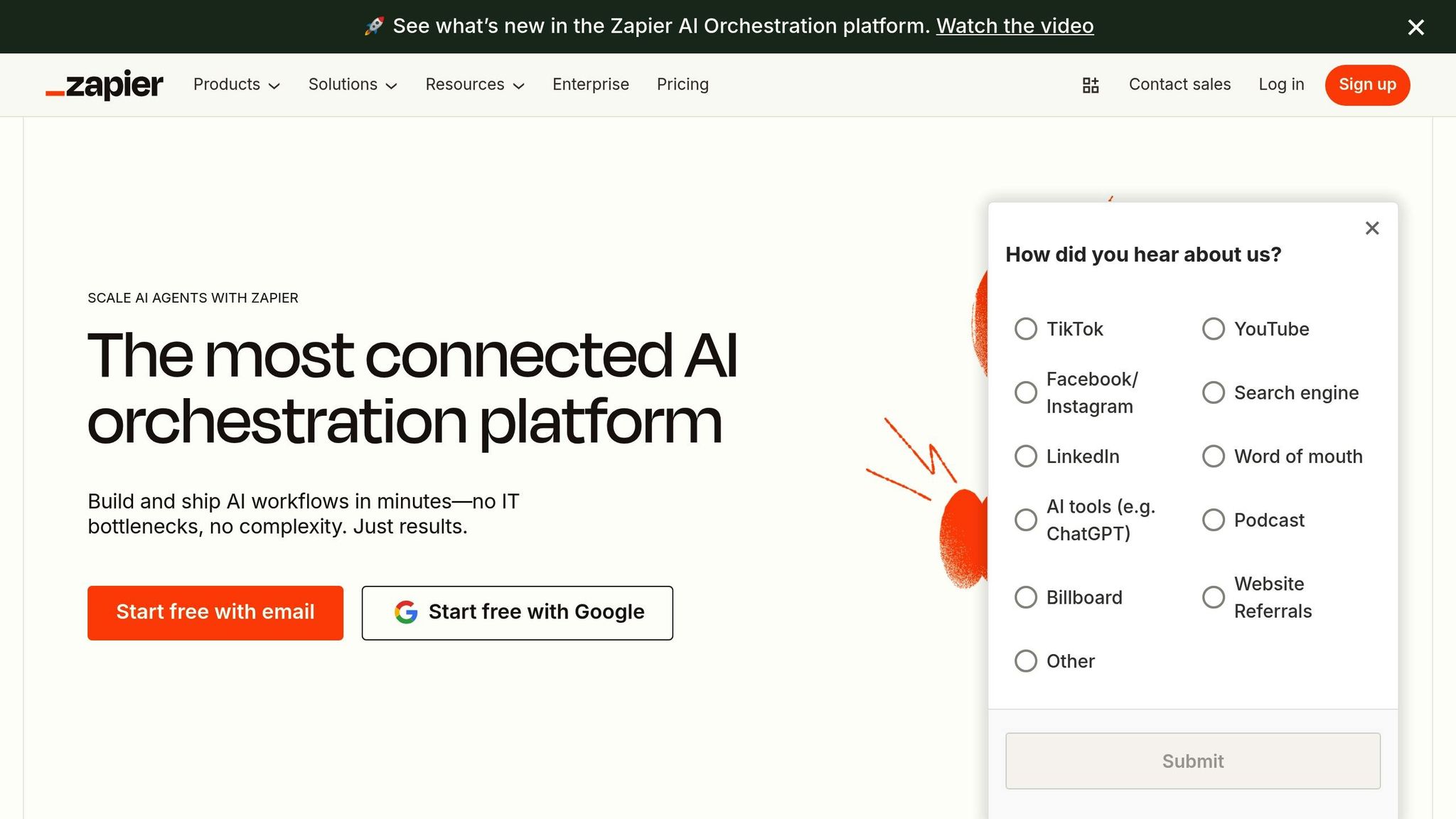
In the ever-evolving world of product marketing, where seamless data integration is becoming a necessity, Zapier has carved out a niche by connecting over 7,000 apps into a unified automation platform. By eliminating the need for repetitive manual tasks, it not only saves time but also reduces the chance of human error. Instead of jumping between multiple platforms and manually transferring data, Zapier allows your tools to work together effortlessly.
What sets Zapier apart is its ability to automate mundane tasks, giving marketers the freedom to focus on strategy and creativity. This shift from operational drudgery to meaningful work has made Zapier a go-to solution for over 2.2 million companies worldwide.
Automation
Zapier simplifies workflows by creating automated connections between marketing tools, covering everything from lead capture to customer engagement. Tasks like lead nurturing, content distribution, data syncing, campaign tracking, and personalized follow-ups become streamlined and efficient [36, 37].
For example, lead management becomes a breeze. Zapier can instantly capture leads from Facebook Lead Ads, route them to your CRM, score them based on behavior, and assign them to the right sales team members – all without lifting a finger [36, 37]. Social media management also benefits, with automated posting, quick responses to messages, and tracking of brand mentions.
The results speak volumes: Orchard saved over 3 hours of manual data entry each week, Sixth City Marketing cut more than 9 hours of monthly lead data compilation, and Lucidchart reduced quality assurance time by 30% by centralizing its data through Zapier workflows.
"Zapier has allowed us to maintain a robust customer profile that allows us to personalize customer communication, diagnose customer experience issues, and helps us share learnings across the company. Since we started using Zapier, so many of our processes have become more efficient."
– Corey Egan, Director of CRM
Analytics
Zapier also changes the game when it comes to handling marketing data. By automatically syncing lead information and customer touchpoints with analytics tools, it generates detailed reports without the hassle of manual data transfers. This ensures that marketing teams always have accurate, up-to-date insights, creating a seamless flow of information between platforms like Salesforce, Marketo, and Google Ads.
These automated data connections enable smarter campaign optimization. Marketers can set specific conditions for sending conversion data to advertising platforms, ensuring campaigns are more effective while cutting down on wasted spending.
"Zapier has greatly improved our marketing spend. We can set precise conditions for sending conversion data to Google, making our marketing accounts very successful and saving us a ton of money."
– James Sperry, Executive Vice President of Business Operations
Beyond just managing data, Zapier’s automation capabilities free account managers to focus on clients rather than administrative tasks. Performance tracking becomes more accurate, minimizing errors often caused by manual processes, and uncovering insights that might otherwise go unnoticed. The impact is measurable: Veo reduced its cost per lead by 20%, and another company slashed its customer acquisition time by over 40% using Zapier workflows.
Next, we’ll explore Lexica Art, another tool making waves in the product marketing world.
4. Lexica Art
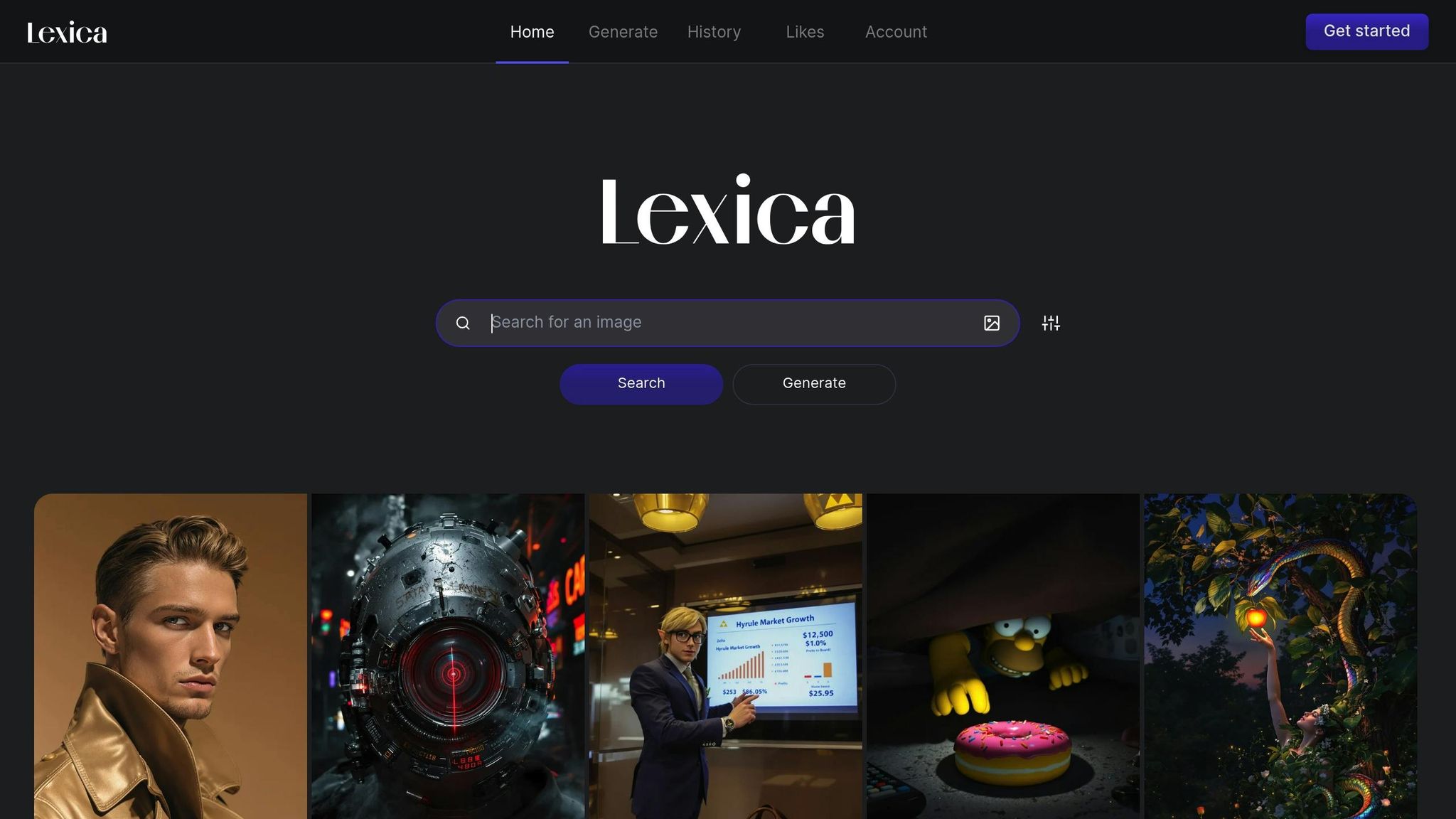
In the world of product marketing, where visuals play a critical role in capturing attention, Lexica Art has become a standout tool for creating stunning AI-generated images. Unlike the often-generic stock photos, this platform uses its proprietary Aperture v3.5 AI model to produce photorealistic visuals that help your campaigns stand out.
Visual Tools
Lexica Art is built on the Stable Diffusion model, offering a range of tools that make creating visuals both simple and effective. With just one prompt, the platform can produce multiple variations, giving you plenty of creative options to choose from. Its intuitive editor allows for fine-tuning images by removing unwanted elements, tweaking backgrounds, or adding graphic details – ensuring the final output aligns perfectly with your brand’s identity. Need to maintain a consistent visual theme? The reverse image search feature lets you upload an image and find similar ones, keeping your campaigns cohesive.
A G2 user shared their experience, saying, "The images generated here are realistic and eye-catching. It also generates unique design elements and concepts quickly.". Additionally, TheDigitalClicks on Instagram highlighted Lexica Art as an excellent tool for creating high-quality visuals for social media marketing.
Content Creation
When it comes to generating content, Lexica Art shines by producing brand-aligned graphics for blog posts, social media, and promotional materials. Its customizable prompts and organizational tools streamline workflows, making it easier to maintain visual consistency across campaigns. Whether you’re designing app store screenshots, blog thumbnails, or social media posts, Lexica Art supports a variety of artistic styles and themes to meet your needs. Plus, the platform automatically names files based on prompts, simplifying file management.
For pricing, Lexica Art offers flexible plans to suit different budgets and team sizes:
- Starter Plan: $8/month for 1,000 fast generations
- Pro Plan: $24/month
- Max Plan: $48/month
While Lexica Art has many strengths, it’s not without its drawbacks. Some users have noted that certain prompts don’t always deliver the desired results. Additionally, the platform’s customization options may feel limited compared to other tools, and creating unique, accurate visuals often requires well-thought-out text prompts. There’s also the risk of generating repetitive images, which may require extra effort to avoid.
Despite these challenges, Lexica Art offers a robust set of features for marketers looking to elevate their visual content. Its tools fit seamlessly into broader AI-driven strategies, paving the way for our next topic: how Surfer SEO uses AI to optimize content and boost search performance.
sbb-itb-e8c8399
5. Surfer SEO
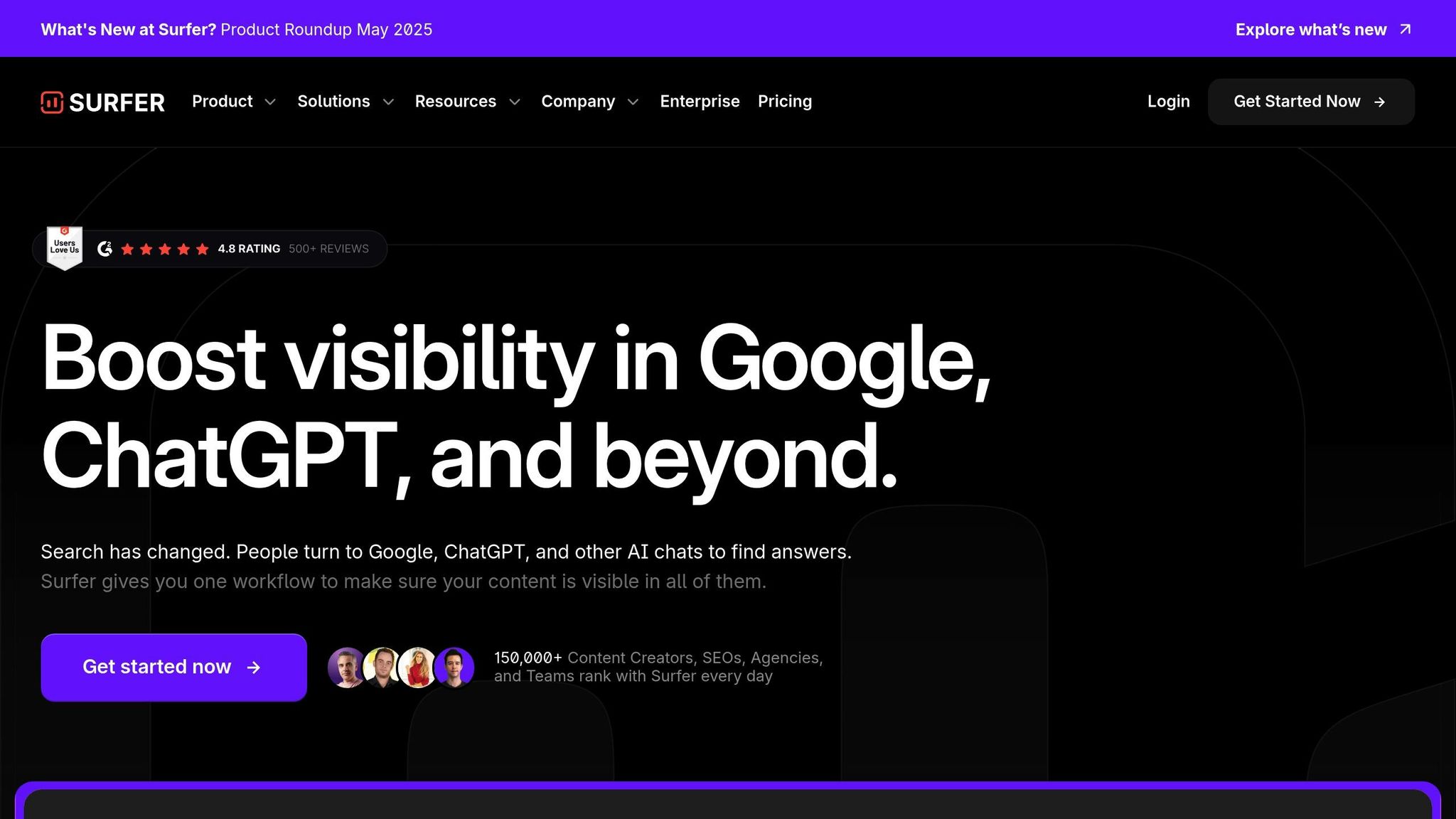
Surfer SEO is a content optimization tool that uses data to analyze over 500 on-page signals, providing actionable recommendations to help your content rank higher in search results.
Content Creation
Surfer SEO supports content creation with real-time optimization tools. Its Content Editor evaluates top-ranking pages for your target keywords and provides detailed suggestions on content length, structure, and keyword usage. Additionally, its AI writing assistant, Surfy, offers editing, rephrasing, and refining options to polish your content. This isn’t about cramming in keywords – it’s about aligning your content with the standards Google and tools like ChatGPT prioritize.
The Auto-Optimize feature takes it a step further by comparing your content to competitors, identifying areas for improvement, and boosting your Content Score. It highlights missing sections and relevant terms, enabling you to make your content more comprehensive and competitive.
"Surfer AI has been helpful in getting my content marketing campaign from 0 to 60 in seconds! The AI-generated content only takes a minimal amount of editing before it’s ready to publish", says Ryan Sekine, CEO & Founder of Fox and Owl Marketing.
Analytics
Surfer SEO also excels in analytics, offering insights that can transform your content’s performance. Its Content Audit pinpoints underperforming pages and suggests ways to improve them, while the SERP Analyzer highlights what your competitors are doing well.
The impact is clear. For instance, ClickUp used Surfer SEO to produce over 150 articles in a year, resulting in an 85% increase in blog traffic. Similarly, Lyzr.ai grew their organic traffic by 150% in just three months (August to October 2024). Another handy tool, the Topical Map, identifies content gaps and suggests clusters of related keywords, helping you discover new topics your audience is interested in.
With these analytics tools, Surfer SEO doesn’t just optimize content – it helps you plan smarter strategies.
Automation
Surfer SEO simplifies content workflows with its seamless integrations. It works with Google Docs, WordPress, Jasper AI, and Contentful, so you can optimize your content without juggling multiple platforms. Its Zapier integration automates entire publishing workflows, and the automatic internal linking feature scans your website to add relevant links effortlessly.
"Surfer has become essential in our SEO workflow at ClickUp. The search console integration with Content Planner has helped us automate crucial steps in our optimization process", says Jeremy Galante, Senior SEO Manager at ClickUp.
For marketers operating on tight budgets, Surfer SEO delivers strong returns. Studies reveal that SEO achieved a 748% ROI over three years, outperforming other marketing channels, especially as paid acquisition costs rose by 15% in 2024. With over 150,000 users across 159 countries, Surfer SEO focuses on refining content optimization rather than offering broader SEO features like backlink analysis.
Benefits and Drawbacks
Evaluating the strengths and weaknesses of each tool is crucial for fine-tuning your marketing stack.
ContentShake AI combines Semrush’s keyword data with GPT‑4’s writing abilities to create SEO-friendly, multilingual blog content. This makes it a strong choice for teams targeting global audiences or focusing on SEO-heavy strategies. However, its heavy reliance on keyword optimization can sometimes lead to content that feels overly structured or formulaic.
HubSpot AI integrates seamlessly with HubSpot’s CRM ecosystem, making it a natural fit for teams already using the platform. While the free plan offers basic CRM tools, accessing advanced AI features requires a paid subscription and a broader adoption of HubSpot’s suite.
Zapier simplifies workflows across more than 7,000 apps, making it a go-to for automation. That said, connecting multiple apps can sometimes result in integration challenges, especially with more complex setups.
Lexica Art excels at producing style-consistent images in batches, ideal for maintaining a cohesive visual identity on platforms like Instagram.
Surfer SEO uses data-driven optimization to improve content rankings, with studies showing SEO-optimized content ranks 43% faster. However, over-optimization can make content feel mechanical, which could alienate readers.
"The biggest problem I see is using SEO tools blindly, over-optimizing for search engines, and disregarding customer search intent. SEO tools are great for signaling to search engines quality content. But ultimately, Google wants to match the searcher’s ask", says Nick Abbene, Marketing Automation Expert.
While AI tools clearly offer benefits, they also come with challenges. For instance, AI can reduce production costs by 32%, increase click-through rates by 47%, and boost ROI by 20%. However, 44% of marketers report confusion caused by these tools, and 57% express concerns over data privacy . Additionally, poor data quality can lead to inaccurate predictions and ineffective targeting.
Here’s a quick comparison of the tools:
| Tool | Key Strengths | Main Limitations | Best For | Monthly Cost |
|---|---|---|---|---|
| ContentShake AI | SEO-friendly, multilingual content | Can feel formulaic | International SEO content | Varies with Semrush plans |
| HubSpot AI | CRM integration, free tier available | Requires full HubSpot adoption | Existing HubSpot users | Free to paid tiers |
| Zapier | Connects 7,000+ apps, simplifies workflows | Integration complexities | Workflow automation | $19.99+ |
| Lexica Art | Batch-generated, consistent visuals | – | Social media visuals | Varies by usage |
| Surfer SEO | Data-driven optimization, faster rankings | Risk of over-optimization | Content ranking | $89+ |
The key takeaway? AI works best when paired with thoughtful human oversight. As Brett McHale, Founder of Empiric Marketing, puts it:
"AI performs optimally when it receives accurate inputs from organic intelligence that has already accumulated vast amounts of data and experiences".
To get the most out of these tools, marketers should calculate time savings against hourly rates to measure ROI, run pilot tests before committing to annual plans, and audit each tool quarterly to ensure it continues to meet their needs. By combining AI’s efficiency with human creativity, marketers can streamline repetitive tasks and focus on delivering impactful results. The goal isn’t to replace human ingenuity but to amplify it.
Conclusion
Building an effective AI-powered marketing stack starts with choosing tools that address real challenges. From our analysis, ContentShake AI, HubSpot AI, Zapier, Lexica Art, and Surfer SEO each bring unique strengths to specific areas of product marketing.
The numbers speak for themselves: AI adoption in marketing has led to a 6.2% boost in sales, a 7% increase in customer satisfaction, and a 7.2% reduction in overhead costs. Over 75% of marketers are already incorporating AI into their strategies. These results highlight the potential for businesses to adopt AI in a phased, strategic manner.
As discussed earlier, it’s wise to start with small pilot projects before committing to long-term plans. Focus on tools that solve your most immediate challenges: ContentShake AI can enhance SEO-driven content creation, Zapier streamlines workflows, and Surfer SEO optimizes content for better performance. Many tools, like HubSpot AI and Zapier, offer free or freemium tiers, making it easier to test their value without a large upfront commitment.
"AI is the next step in business automation. AI had been instrumental in improving business processes. AI can be deployed to an organization’s business process for a particular strategic purpose to increase efficiencies, cut costs and improve customer service."
- Jasper AI
The benefits extend beyond cost savings. About 70% of marketers report that AI enhances team productivity. Tools like ChatGPT, for example, save up to 40% of the time spent on writing tasks while improving task quality by 18%.
AI should amplify human creativity, not replace it. The most successful companies aren’t using the most tools – they’re using the right ones strategically. Look for tools that integrate smoothly with your current systems, provide clear ROI metrics, and align with your marketing objectives.
Start small: address your biggest pain point with one tool, measure its impact, and expand from there. Moving from experimentation to systematic implementation ensures that every tool in your stack delivers measurable results and contributes to your overall strategy.
FAQs
How do I choose the right AI tool for product marketing?
To pick the best AI tool for your product marketing, start by defining what you want to achieve. Are you aiming to boost content creation, fine-tune your campaigns, or better understand your customers? Once you’ve nailed down your goals, focus on tools that match those specific needs. Evaluate options based on their ease of use, how well they integrate with your current tools, and the return on investment (ROI) they offer.
For instance, if content creation is your priority, Jasper could be a great fit. Need help with SEO? SurferSEO specializes in that. Looking for a versatile tool? ChatGPT can assist with brainstorming ideas or polishing your messaging. To make an informed choice, explore case studies or examples of how other marketers have successfully used these tools.
Ultimately, go for tools that are intuitive and deliver clear, measurable results. This way, you can simplify your workflow and maximize your marketing impact without adding unnecessary complexity.
What are the main challenges of using AI tools in product marketing?
Challenges of Using AI in Product Marketing
AI tools have the potential to transform product marketing, but they’re not without their hurdles. Here are a few key challenges marketers need to keep in mind:
- Data Privacy and Security: AI relies heavily on large datasets, which can bring up serious privacy concerns. Marketers must navigate strict data protection regulations to avoid legal issues and safeguard their reputation. Mishandling sensitive data could lead to significant consequences.
- Creativity Limitations: While AI excels at analyzing data and automating tasks, it often falls short in crafting emotionally engaging or groundbreaking content. This can result in messaging that feels generic and struggles to connect with your audience on a deeper level.
- Dependence on Data Quality: AI’s performance is directly tied to the quality of the data it processes. If the data is incomplete or inaccurate, the insights and campaign outcomes will likely fall short of expectations.
By being aware of these challenges, you can approach AI implementation with a clearer understanding and set realistic expectations for its role in your marketing efforts.
How can AI tools be seamlessly integrated into marketing workflows to boost efficiency and results?
How AI Tools Can Enhance Marketing Workflows
AI tools have the power to streamline marketing efforts by taking over repetitive tasks, offering actionable insights, and helping marketers make smarter decisions. To get started, pinpoint areas where AI can make a difference – think content creation, customer segmentation, or campaign optimization. The key is to choose tools that not only match your objectives but also integrate smoothly with your current systems and are simple to use.
If you’re aiming for maximum results, look for tools equipped with predictive analytics. These can help you allocate resources more efficiently and build stronger connections with your audience. Keep an eye on performance metrics, experiment with fresh strategies, and tweak your approach as needed to stay ahead of market shifts. This ongoing adjustment ensures that your AI efforts stay aligned with your marketing goals, leading to better engagement and a stronger return on investment.
Related posts
- 5 Ways AI Can Optimize Marketing ROI for your Tech Startup
- Checklist for Choosing AI Marketing Budget Tools
- AI Growth Marketing: Forecasting Use Cases
- 5 Powerful Artificial Intelligence in Marketing Examples For You To Copy
